Is it still possible to grow lettuce without aphids? At the moment, there are serious doubts. That became very clear during the Lettuce Chain Day held on Thursday. Because of the complexity of the issue, the entire supply chain is now working on a joint approach.
At Vertify in Zwaagdijk, the whole lettuce chain gathered during the seed technology fair Seed meets Technology to discuss the aphid problem. In recent years, Dutch open-field growers have faced an explosion of aphids, specifically Nasonovia ribisnigri. "The situation is truly bizarre," said grower Dorus Droog of Pater Broersen.
Other speakers from across the chain echoed the same conclusion later that morning. The biggest concern is iceberg lettuce, where aphids can easily hide deep inside the crop and are then extremely difficult to remove.
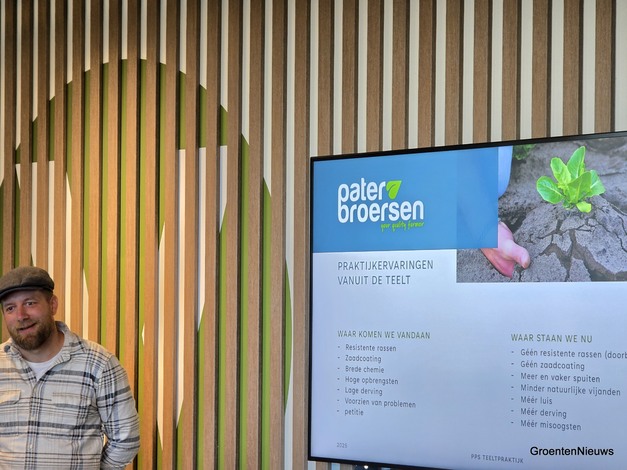 © Thijmen Tiersma | FreshPlaza.comGrower Dorus Droog shares his practical experiences
© Thijmen Tiersma | FreshPlaza.comGrower Dorus Droog shares his practical experiences
Research into solutions
So what was the mood? A mix of somber and determined. Growers voiced their concerns, and it became clear that despite ongoing efforts, there is no silver-bullet solution at this moment. "I don't have good news," said Ilse Vlaar bluntly.
As project leader for open-field vegetables at Vertify, Vlaar presented the latest research results on possible solutions. Trials with various crop protection products still showed unacceptably high levels of aphids, both on Vertify's trial fields and in growers' fields. Using different types of crop covers may help, but this also brings new challenges, such as reduced light penetration or a humid microclimate under the covers, conditions that aphids actually thrive in.
 © Thijmen Tiersma | FreshPlaza.comVertify experiment with coverings
© Thijmen Tiersma | FreshPlaza.comVertify experiment with coverings
Lack of resources
Growers are allowed to keep using Batavia and Movento, two aphid control products, until October 30, 2025. The loss of Batavia was already expected, but the disappearance of Movento as an option came as a more surprising setback, explained advisor Johan Kos of Vertify during the discussion of a new public–private research project on Thursday.
In the previous PPS project, the idea had been to rely on Movento. Having that chemical option in hand gave the sector precious time to search for alternatives. Now that the time cushion has vanished, a real solution is still missing.
There remains a glimmer of hope for a temporary exemption that would allow Movento to stay on the market a bit longer, Johan noted. That would buy the industry some time. Still, he doubts whether the exemption will be granted. The overall trend is clear: The sector, not just lettuce growers, is being pushed to cope with fewer and fewer chemical crop protection products.
Other products under consideration include Verimark (currently under review by the Dutch Board for the Authorization of Plant Protection Products and Biocides, Ctgb), Neudosan (already authorized but not a complete solution), and Teppeki (application pending in the Netherlands, already permitted in Germany). At the same time, strong efforts are being made to expand the use of "green products," biological crop protection solutions, while hopes are also pinned on the development of resistant varieties.
 © Thijmen Tiersma | FreshPlaza.comThe test fields were visited in three groups
© Thijmen Tiersma | FreshPlaza.comThe test fields were visited in three groups
Biological control
On behalf of Koppert, Pascal Staaks presented research results on iceberg lettuce cultivation. The company, known for its expertise in biological control, is focusing on the green lacewing, Chrysoperla carnea, as a tool against aphids.
It is clear, however, that outdoor lettuce production is not yet as advanced as greenhouse crops when it comes to using biological control agents. Challenges include finding the right spraying technique, ensuring compatibility with other crop protection products, and, of course, the fact that biological control agents are still insects, something consumers definitely don't want to find in their lettuce.
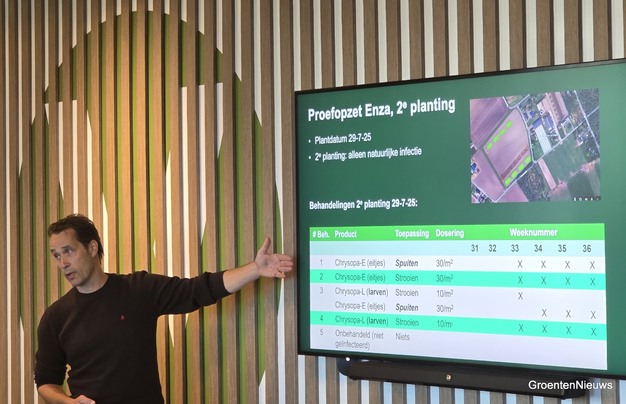 © Thijmen Tiersma | FreshPlaza.com
© Thijmen Tiersma | FreshPlaza.com
Pascal Staaks, Koppert
0-tolerance on bugs
Supermarkets know all about this issue. Representatives from retail chains were also present on Thursday, since they are the ones who receive complaints when consumers discover aphids in their lettuce, or when they point out that lettuce can't really be called "vegan," as the packaging claims, if insects are still inside.
The challenge is greatest with whole heads of lettuce, which are sold unprocessed. Aphids can crawl deep into the heads, making them very difficult to remove. But even processing companies are struggling. Washing lines can't always eliminate the often large numbers of aphids, and when they do, the wash water ends up swarming with them, creating a different kind of problem.
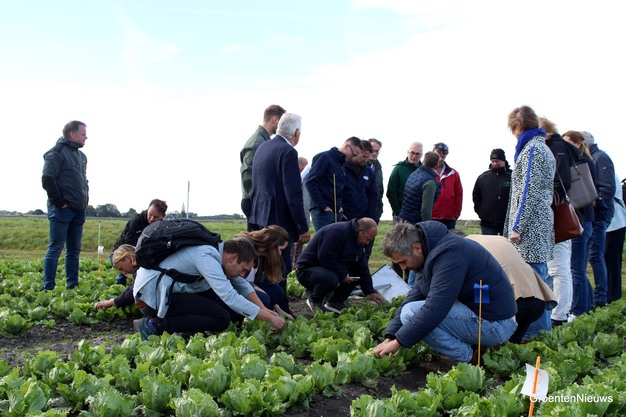 © Thijmen Tiersma | FreshPlaza.comLooking for aphids in the row of untreated iceberg lettuce heads
© Thijmen Tiersma | FreshPlaza.comLooking for aphids in the row of untreated iceberg lettuce heads
No alternative
So, why not just bring in lettuce from abroad, or switch to hydroponic production? Stories about imported lettuce have already been making the rounds. In the autumn of 2023, truckloads of lettuce from Spain arrived at a cutting facility crawling with aphids, a clear wake-up call. Not long after, Dutch growers also began facing the same issue. In 2024, the problems were concentrated in the south, and by 2025, the northern regions were hit hardest, with aphid explosions impossible to ignore.
And what about lettuce grown on water, in greenhouses or vertical farms? Surely that should stay clean, right? Unfortunately, not always. Even this year, lettuce from hydroponic systems arrived at the same cutting facility carrying aphids.
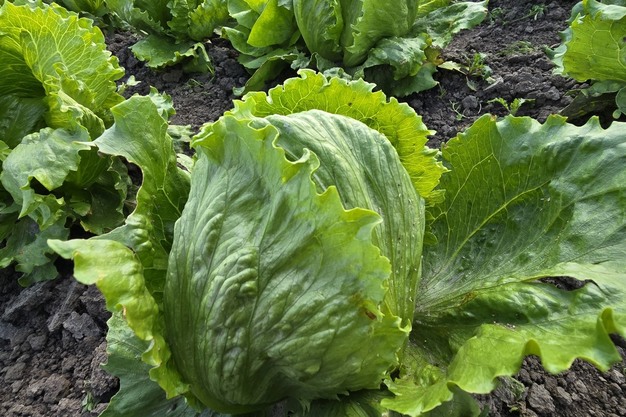 © Thijmen Tiersma | FreshPlaza.com
© Thijmen Tiersma | FreshPlaza.com
Find the aphid
Resistant varieties
Speaking on behalf of breeding company Enza, Ton Smolders addressed the topic of resistance. The first resistance against aphids was introduced back in 1999. However, by 2007, that resistance, aimed at Nas0, had already been broken. A high-level resistance (HR) to what the industry refers to as Nas1 took much longer to appear. But that moment has now arrived. Starting next year, seed companies will be launching varieties with resistance to Nas1.
For aphids, though, there is still no standard protocol to assess resistance. Such a system does exist for downy mildew, or Bremia, and remains an important safeguard. This difference continues to be a point of concern within the sector.
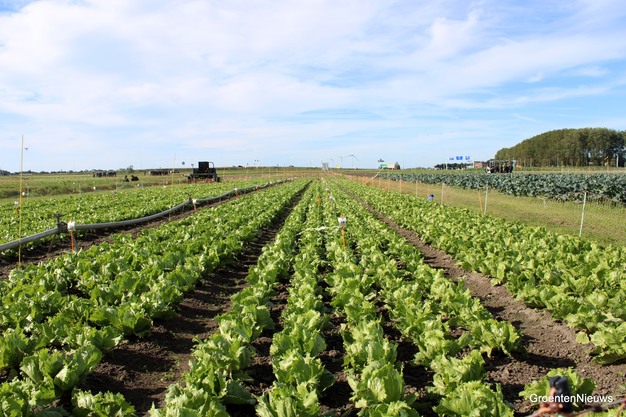 © Thijmen Tiersma | FreshPlaza.com
© Thijmen Tiersma | FreshPlaza.com
Test field with fungal problems, also a continuing challenge for growers
0-tolerance for aphids remains the goal
Growers can't get rid of aphids, and processors have concluded that washing lettuce completely free of them simply isn't possible at the moment. Still, the industry has no choice but to aim for zero aphids in lettuce. On the one hand, consumers, including everyone in the room who knows how complicated the issue really is, will never accept finding aphids in a bag of lettuce. Trying to "educate" consumers to tolerate it is a nearly impossible task. On the other hand, the zero-tolerance rule remains in force because regulations won't allow lettuce with aphids on supermarket shelves.
That gives the sector all the more reason to put their heads together, not just at this meeting but also in the coming years through a new public–private partnership project called Sufficient, healthy, and sustainably grown field lettuce. Grower Dorus Droog is optimistic, even "super enthusiastic," about this initiative. This time, there really is collaboration across the entire chain.
Still, the tough conclusion for 2026 stands: There are no resistant varieties available yet for outdoor production in Spain next winter, and Dutch growers don't have their silver bullet either. There's plenty of work ahead. Until then, as Dorus himself put it with a smile, "God bless the effort."
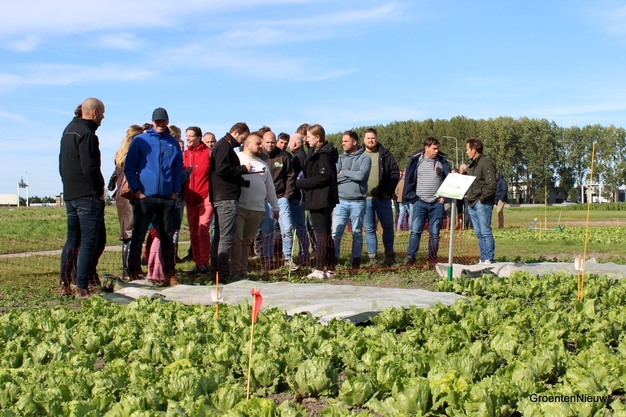 © Thijmen Tiersma | FreshPlaza.comIlse Vlaar (Vertify) at the experiment with coverings
© Thijmen Tiersma | FreshPlaza.comIlse Vlaar (Vertify) at the experiment with coverings
For more information:
Vertify![]()
[email protected]
www.vertify.nl/
